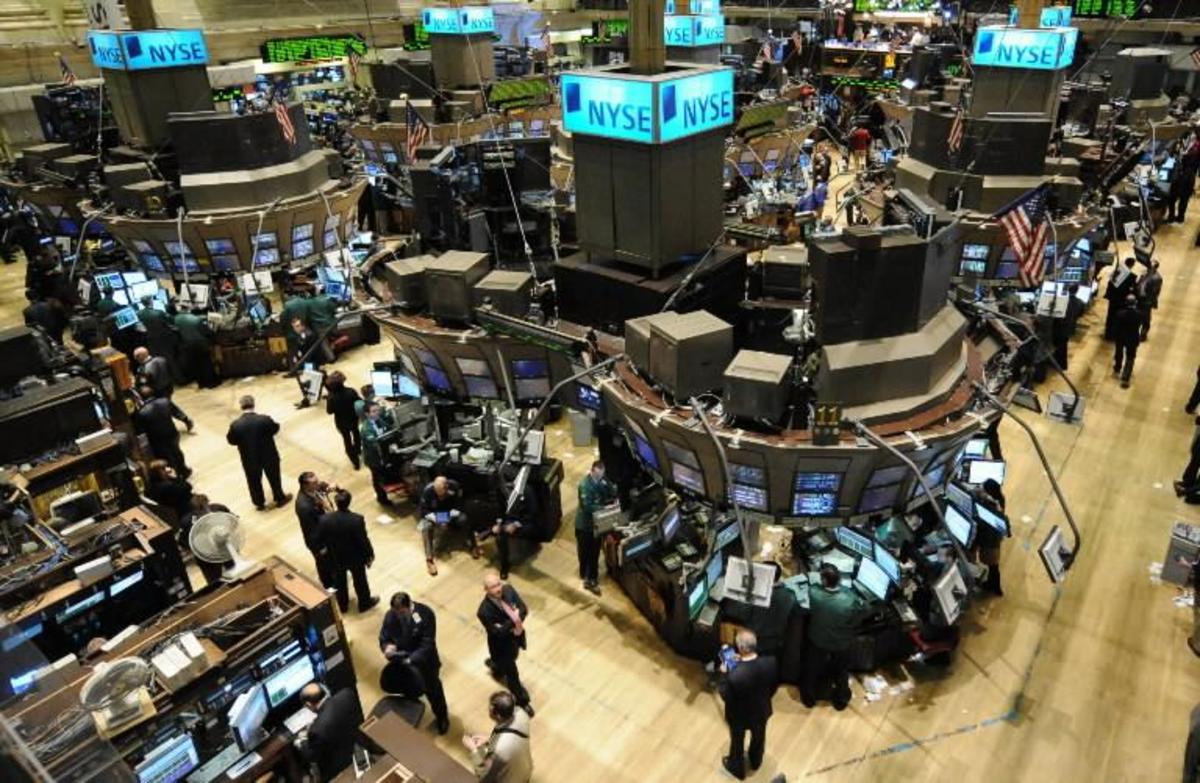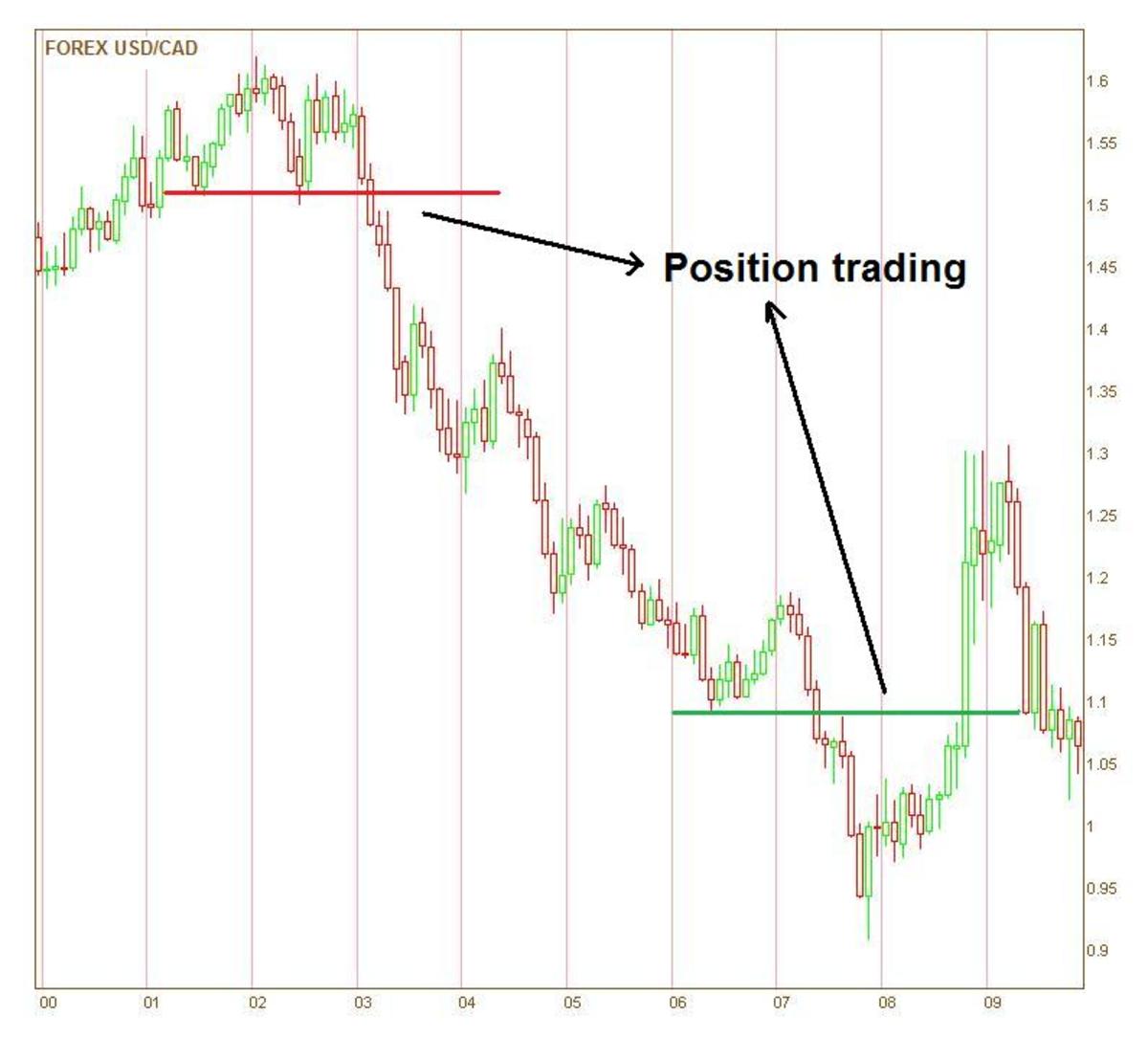stock market trend trading
Dear Trader
Many moons ago it was only the Japanese that really used technical analysis (candles sticks - more on that in another module), the majority of the west relied mostly on fundamental data; the companies net worth, profit share and so on.However in the early part of the 1900’s one man discovered that charts do in fact relate to psychology of greed and fear. Many of his writings only appeared in the Wall Street Journal and although praised, not really taken on board until another trader and writer took these articles and formed a theory based up the findings of the man that lent his name to the DJIA - his name was Charles Dow.In this module you are going to learn what the Dow theory is and how you can apply this relatively painlessly to your own trading.Are you ready, I certainly hope so.Sadly this is your last module on the free course. The full course includes additional modules to enable you to analyse markets for good long and short term trading opportunities. Further more, the full course provides a complete all encompassing training website, some of the details are in the box on the right.Remember, learning to trade takes time and patience. As with learning anything new, it is highly important that you select the right teacher. Fur-thermore, it is equally important to not over stretch yourself financially with you training costs. You have to add the cost of your training as a cost before you’re profitable. Therefore, if your training cost’s thousands, you have to make that money back before you’re profitable . Thankfully, the Insight Trade Focus training course is within reach of most. Take a look today.Don’t forget, any questions please let me know. I hope you’ve enjoyed these free modules and I look forward to hearing from you. I shall con-tinue to email you for a little while, just to simply say hello and to keep you informed.Warmest regardsStu WhissonInsight Support Ltd.www.insightsupport.com Right then, lets get things moving and start your training.Technical Analysis is a technique used to spot price movements in charts. What you are going to learn within this workbook is a combination of Technical Analysis and my own techniques for spotting price movements and managing to trade successfully, regardless of what the market is doing. I would suggest that you do NOT buy any books on Technical Analysis as these will only confuse and bemuse you. I do not exclusively use Technical Analysis and rely heavily on my own techniques that I will detail to you through this sec-tion.Some of you will be familiar some aspects that we cover within the early stages, which is great, as this will further instill your understanding. I will be covering various techniques, which will allow you to trade in short time frames during a day (intraday) to a more conser-vative trading strategy lasting days and weeks. We will be covering; charts, trends, bounces, scalping, candlestick trading and much more. During your training you will be asked to refer to various videos which are available online, through the student website, Trade Focus. When I first started writing this course, I covered the techniques that I was using at the time – this was back in late 2002. Since then I have developed additional techniques that have enabled me to trade with a good degree of accuracy and dare I say relatively stress free. However, you will need to get a good grip of the main aspect of your training that covers the main technique that I use for spotting potentially profitable trades. From cover-ing this first area, and making sure you have a clear understanding of how to apply this ini-tial technique – we will then move onto the more advanced techniques. I think it’s foolish to believe that there is a single system or technique that can be applied and be expected to make consistent profits. The reason being is that the markets are not consistent in their nature. If they were then trading would be very easy indeed and there would be a million traders talking of double bottoms in the nearest pub. It is therefore pru-dent for any trader, new and old alike to have an armory of techniques that can be used, regardless of what the market is doing. This training course provides you with just that and more; first the knowledge of the markets and specifically the product that we trade. Next the fundamental tools and techniques, with further tools and techniques to capitalise on virtually any market condition. For those of you that are less experienced, or entirely new to trading. Don’t panic, what at first may seem very complex, is in fact relatively straight forward. It’s like learning anything new for the first time. It becomes hard work, but the more we apply the techniques, which you will be doing later in the course, the easier and more proficient and skilled a trader you will become.Before we begin, it is important that you understand the workings of Financial Spread Bet-ting. Therefore, please make sure that you fully understand the majority of trading this way. Especially trading Long and Short on US and UK shares – as this is where we will be mak-ing the majority of our trades.If there is any aspect that is unclear to you, either now or further within the courseware; first re-read the courseware to make sure that you haven’t missed anything, secondly, wait till you get to your courseware module assessment and if none of these help, get in touch with me using the support tool as soon as possible. Remember I am here to help you, but I can only help you if you ask for it. TrendsWhat are trends? Trends are long term indicators within a chart that show that over a pe-riod of time the price movement of that chart is either primarily going up or down. Spotting these trends isn't difficult and to be honest is pretty obvious. If over the past 5 years the overall outlook on a chart is downward then not so surprisingly the trend is down and like-wise if this going up. Image courtesy of www.hedgedcharts.com The good thing for us is that it doesn't matter which way the trends are forming. As we can make money from price movements going up or down. That is possibly one of the best reasons to trade in Financial Spread Betting, but amazingly many still only decide to trade when the market trend is going up. Why do we look for the overall trend in a chart? The overall outlook of a chart tells us that the general trend is either up/down or sometimes even sideways (consolidation). That doesn't initially mean that we look to trade either up or down, there are many other tools and techniques that the chart has to pass before we even decide to look to trade. What this does allow is the ability to view many charts very quickly. There are many charts, thousands in fact. You can set up any online services or software programs that allow you to view those, which are rising or falling. But you are best using your eyes to scan through those, which you have narrowed down. All the charts that I look at are initially scanned by eye very quickly. Now I realise that you may at first be thinking, ‘how on earth can I scan thousands of stocks’? Well, I don’t. I only scan perhaps several hundred based within each Index. Ide-ally you want to concentrate on looking at those charts that are common throughout the majority of the spread betting broker sites, and the surest bet (excuse the pun) is to stay within the bounds of the common indices – FTSE100, FTSE250, NASDAQ, DJIA30, S&P100, S&P500. There are just over 1000 charts in total within these combined indices. The key though is to start scanning the FTSE100, wet your feet there. Then move onto the FTSE250, eventually you will find that you won’t be scanning all the stocks within the indi-ces – god forbid! You will find though that you will concentrate on two indices. For exam-ple, I tend to focus on the FTSE250 and the S&P500. These take me about an hour a day to quickly scan and create short lists as follows.To make your selection process as simple and as speed as possible, you need to either use a good quality online service – for example Trade Focus; as by the time you read this Trade Focus will have its own charting application, complete with a portfolio manager. As a default within the portfolio section there should be three folders; of course you can cre-ate you own in your own portfolio or within the software application that you maybe using.We need to set up three folders as follows:Folder 1 called: 1st Stage SelectionFolder 2 called: 2nd Stage SelectionFolder 3 called: Trading Here is what each folder is for:1st Stage Selection –This is where you place the chart or Epic codes (Epic codes are short names usually con-sisting of initials of the company, that the exchange uses to refer directly to that company – for example, Microsoft is MSFT), of each stock that you have quickly glanced through. See this as a pre-analysis. It’s your first view of the stock, based initially on the trend and the other indicators that we use. It’s your quick short list of stocks to analyse in greater de-tail later.2nd Stage Selection –After you have gone through the index of your choice (for example FTSE100), you then start to look at those stocks in your 1st Stage Folder in greater detail. This is where we take a good hard look at the stocks that we wish to move onto our final trading folder. It’s where we make decisions. We look closer at the trend, the indicators and which technique or combination of techniques will be best suited to that chart. By using the techniques (which we are going to cover shortly), you will then be empowered to make an informed decision to move that stock to the ultimate rank of ‘Trading’.TradingThis folder is used for those stocks that we are trading, Long or Short.By using the above three-folder technique for managing your trading activity, will save you an awful lot of time. As you can easily refer back to any folder over your trading week, as some stocks initially may have not met certain criteria to move onto the next folder, but by referring back to each folder, you can check which ones are meeting that criteria and move them onto the next folder as and when. Eventually you will reach a stage where you will have a list of quality stocks that you can refer back to and analyse. Of course, you must be mercenary and remove a stock from any section if it’s not performing as expected. Additionally, you must update all sections by completing regular weekly scans of your chosen index to update with potential new charts to add to your 1st Stage Selection and so on. How long in terms of years, months etc. should we be looking. For the overall view of a chart I look at just the past 3-6 months initially. This gives me enough information to get a general medium term view as to that charts position, Long or Short. Sometimes there are charts that seem to trade one way then the next, they seem not to be able to make their minds up, if we spot these, (as these can be profitable also) we place them in our 1st Stage Selection folder and move from there. Most charting services and software programs allow you to save collections of charts based on criteria or save them to folders, sections or portfolios. There is an exhaustive list of services both within the resources section and within the links directory. Don't feel as though you have to splash out on some 'state of the art' service or software. There are many free services that you can initially use, even if you have to make a note of the *Ticker Symbol/Epic Code as first. Only when you understand the methodologies that I employ would I recommend that you begin to look for a program or service – for those of you Trade Focus should be more than enough.I want you now to go to a charting service: This can be our own charting application serv-ice within Trade Focus or one of the Internet such as www.marketwatch.com (for US and other countries) and www.advfn.com (for UK/Europe) and within each website there should be a list of current movers & shakers. Now you have to remember that we are inter-ested on shares that are going down as well as up and the majority of the online services tend to concentrate on growing shares. Take a look at each of the charts they show and make an overall assumption as to its yearly trend and either make a note of the stock/index etc. or create an account (usually free) to save within the above named fold-ers.If you don't want to bother with using online services, you can download free charting demos from www.download.com, just search for 'Financial Charting Software'. Remember at present we are just training. So it doesn't really matter that the data we are looking at isn't that up to date, but most online services are up dated daily if not every 15 minutes. The free software downloads tend to be out of date to a degree. Either way it doesn't matter as all I want you to get used to is looking at charts and spotting this initial trend. From there I want you to place each within the folders outlined.Our next step will be talking about spotting the types of trend that we find and what they mean.From the last page you should by now have a range of charts. It is these charts that I want you to begin working with, so you become familiar with the charts themselves, the tools we use and maybe even the companies that the chart represents. As I said previously, we look for an initial trend over a 3 to 6 month period, we then place that chart within one of the above folders, or make a note of the ticker. It doesn't matter if you don't have many charts saved or details available. Just a couple of each is adequate – Long (Trading Upwards) and Short (Trading Downwards) and if you can find one, a chart that is neither trading up or down but looks like it is Zig Zagging (up/down) a great deal.So we now have a collection of charts that we have scanned by eye for an initial take on the general overall trend of that chart. Now I want to explain to you a theory. Now don't panic or get too concerned. I believe that it is only fare that I explain to you some of the theories that I have read, as these do have a degree of influence on what I look for in charts and how I look for profitable price movements. Again note that this is just a small part, an influence, not something I live and die by.Dow Jones TheoryI wont bore you to death too much about how the Dow Theory works. I just want to take a couple of pages to explain to you a theory that has a degree of influence on the trades that I make.The Dow Theory has been around over a 100 years or more now but still today this theory is still being used by many Fund Managers, investors and the like around the world. So it deserves some lip service at the very least.When the Dow Theory was first developed it wasn't and still isn't designed for single stock evaluation. It was designed primarily to work with a collection of stocks, such as those found in Indices or Sectors of. Although, some of the theory that I use can be used for sin-gle stock evaluation. Hope that doesn't confuse you there.Charles Dow developed the Dow Theory, not so much as a book or anything as far as a paper. He wrote for The Wall Street Journal and spent many years developing his own theories that forecast on the basis of the movements of a selected group of stocks. These were sent as editorial for The Wall Street Journal. It was these fragments that built up over time, later brought together by William Hamilton that represent the theory as it is known today.Now I wont go in depth on the Dow Theory as our trustee computers process the main tools that we use that signal price movement. The main areas of the Dow theory that you should be aware are those of the following, and this is the only part of the Dow Theory that I use. So don't bother boring yourself to death by buying a book on it. Save your money and your time.Primary Trend:The current state of the company as far as everything is concerned; be it news, profit warning, dividend pay-outs is reflected in the chart already. In other words, what you see in front of you, is the current standing of the company in relation to expectation and the markets. Sounds obvious, but we already know that what we see is not necessarily the real value of the company. What Charles Dow is saying, is that the current chart that we see is how the market has averaged out where the company stands in terms of it attrac-tiveness to being traded bought/sold - that everything has been taken into consideration. Now there maybe blips caused by so called secondary trends, but the overall trend - the primary trend is the trend that can't be easily manipulated by fare means or foul. My say-ing is "In the end the price will follow the trend" or there's another more popular one "Let you Trend be your friend" - by that we mean that trading long term against a trend is haz-ardous.Another thing Dow noticed was that when a company announced 'Good News' the share price dropped. Surely good news would create buying of that stock not selling. This reac-tion to use, proves Dows theory a little more in that charts reflect the current state of that shares attractiveness to buy/sell with everything considered in the price. So what is happening is that the News has ALREADY been accounted for in the share chart. By the time the news has hit the public, the chart has already reacted and moved on. Hence another saying 'By the rumor & Sell the News' In fact I have been burnt when I first started trading by not taking head of the above ad-vice. I ended up buying the news and lost a lot of money. Thankfully, you wont be making the same mistakes, I've since learned my lesson.Therefore if you're trading long term 3 months or more follow the primary trend or at least be aware of it. Hence our initial assessment of the charts and placing them into certain categories. I would now like to give you an idea of how trends work with Bullish (Rising) and Bearish (Falling) markets. The Dow theory suggests that there are three stages in both a Bullish and Bearish market. Once again, I have put this here for your own reference. You wont have to worry too much about spotting these trends within the markets. As the tools that you will be using will do a great deal of the hard work for you. The rest is a matter of training your eye to look for key signals that point to price movements.Rising Markets:There are three stages that the market goes through:Stage 1: Accumulation - This is where the prices have hit rock bottom. Either through a stock market crash or something as devastating such as a depres-sion or recession. Few have money to invest and most are not keen after having their fingers burnt from a plummeting market. What happens next is that the people with money. Large private investors and institutions (banks etc.) start buying into the markets again. They see good value and are one of the few left to have the resources and the gut to start putting money back in the markets. You can spot this by increased in Volume (amount of shares bought or sold) - these are shown at the bottom of a chart; go back to the charts at the very beginning of this workbook and you will see the volume at the bottom of some of the graphs.There wont be a surge in the price, but volume will show a marked increase.Stage 2: Moving on Up: This is one of the longest periods on a Rising mar-ket. It is when prices will begin to rise substantially. This is usually because general business confidence is increasing and therefore a more marked in-crease in stock purchase arises.A tremendous period to make money during a trending market. Easy to spot by further rises in volume, but more so by the obvious hike in prices over the longer term.Stage 3: Excess: This is when the public become involved in the markets (as ever they are the last to know). Speculation leads to increased highs in the charts. This is the final stage in a rising bear market. Once again easy to spot as the chart is peaking and rising sharper than at any other point. Money can be made here, but the top of the market isn't very far away. With a bit of imagination you can see a rising market such as this, as if they were 3 steps on a stair. The first step quite shallow and rising slowing, a few months long, the next step (moving on up) is longer but much higher, the third and final step is steeper but shorter. Falling MarketsOnce again there a three stages that Dow noted in his theory when a market begins to fal-ter and fall.Stage 1: Distribution. This is a subtle change that needs a close eye to notice what's happening. This is where the initial 'Smart Money' realises that market is weakening, through a realisation that the business may not be as good as first thought. This subtle change is noticed once again in volume. The volume of sales decrease but the price remains high. This is because the overall opinion by most investors in that market is still positive, despite a slowing down in positive volume.Stage 2: Moving on Down: Much like the stage 2 move in the Bull market. This is the longest period and the largest fall in prices over the longer term. Business conditions become obviously poorer and as a result the average in-vestor decides to cash in. Stage 3: Despair: The final stage. Much like the very beginning of the Bullish market, yet volume is down to an all time low. Markets have flattened and business forecasts are depressed. No one wishes to place money in the markets. The institutions have long taken their money out and have invested in safe products such as Gold, T Bonds etc.Once again we can see how the above can be seen as 3 steps of a stair, but this time go-ing down. You could easily look at this as a mirror image of the Bull trend, but obviously in the other direction.Previously we have looked at Trends and how we look for them. By now you should have an understanding as to spotting a leading major trend over a period of one year, as well as knowing how trends are formed by reading about the Dow theory.As I am sure you are beginning to realise. It really isn't that difficult and a great deal of many of the systems and tools that we use and the theories that we subscribe to are mostly down to common sense.I wanted to write a chapter of the Dow Theory not so much as a key focus or anything that you should worry about too much. I wanted to provide you with a brief understanding as to possibly the longest running theory on trend analysis and how they are believed to form. Using this knowledge will help you become more aware of smaller trends within the larger key trends that we looked for at the beginning, when I asked you to use an online service or a software program to collect a series of trending charts. We will return back to those in a minute.







